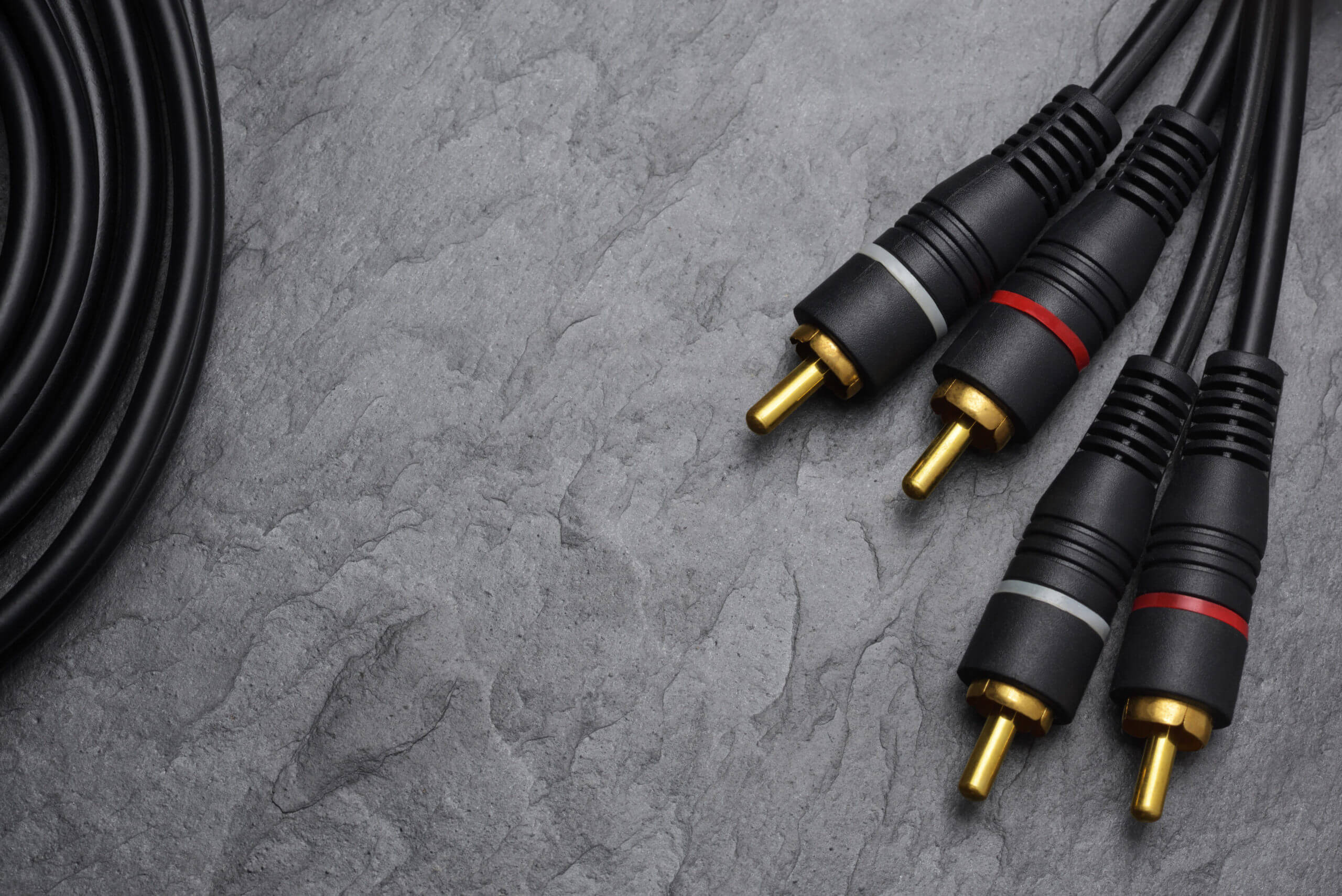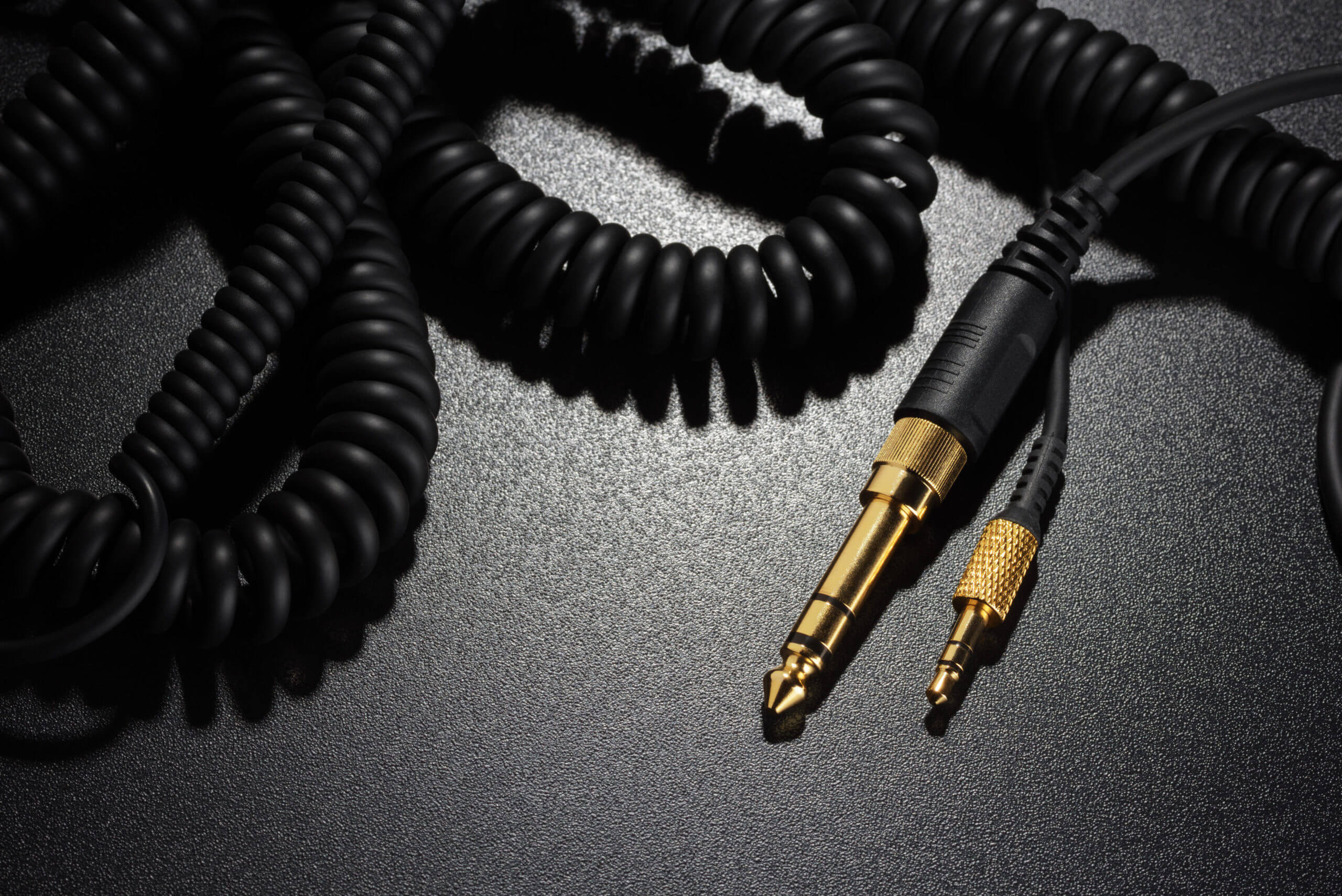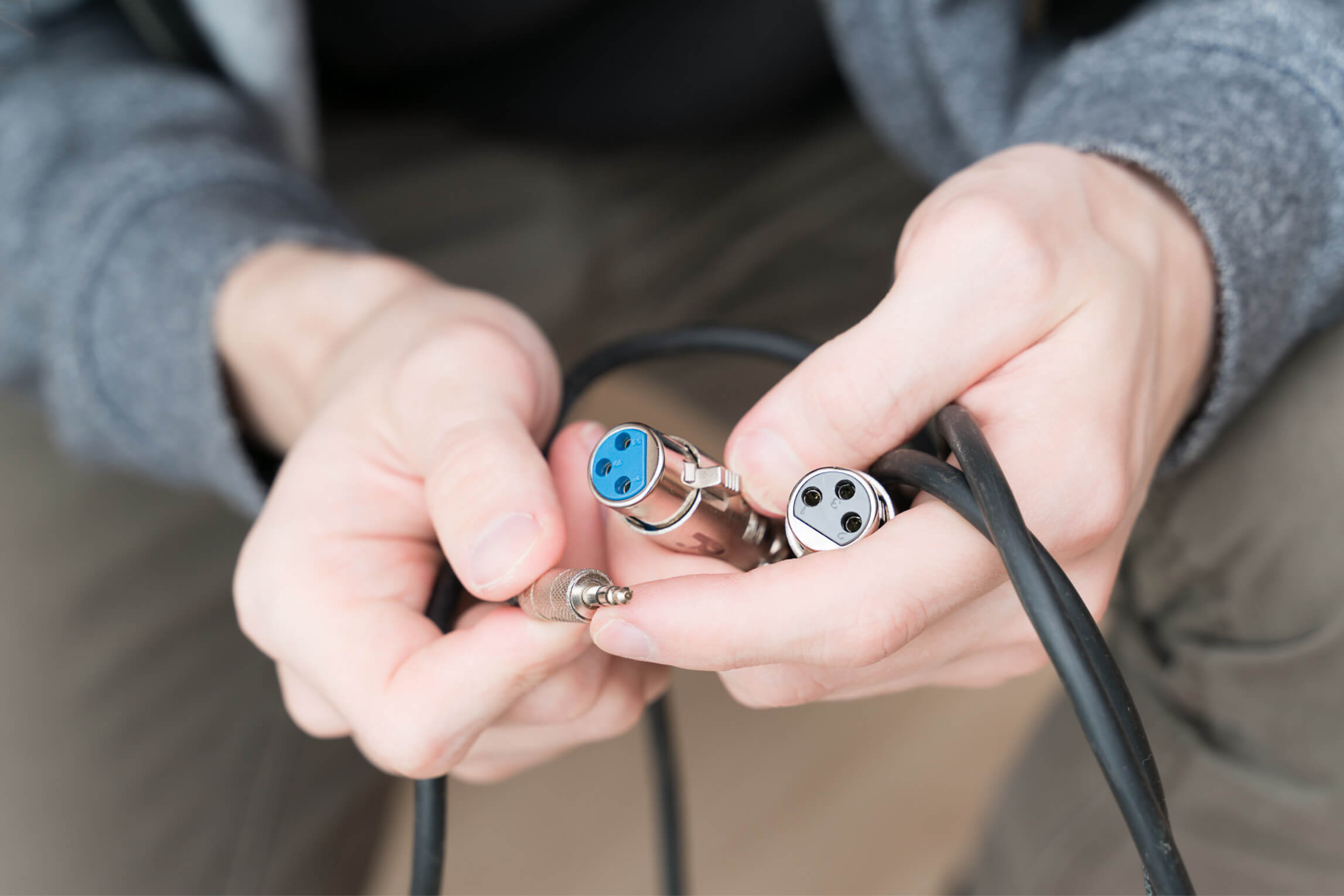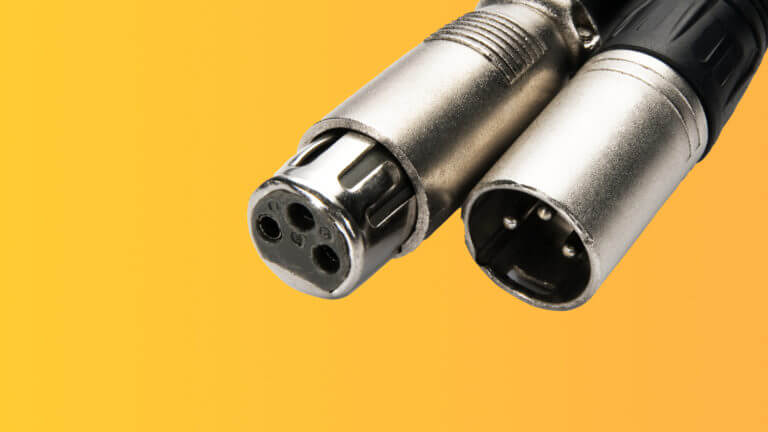DJ cables are the least fun but the most important part of being a DJ. This guide will tell you everything you need to know so you can rock the stage.
Without question, cables and wiring have to be the least interesting or compelling part of a performance set-up, regardless of the industry. However, it is just as true that, without these same cables and wires, everything that we use becomes useless.
Especially in the DJing and music production field, there are a massive number of different cables and wires that you’ll need to regularly keep track of. These can include wires dealing with analog signals, digital signals, balanced inputs, as well as unbalanced inputs.
Read Next: Best Speaker Wire
There are a lot of different things for the modern DJ to keep track of, and very few people know what they all are or even where to start.
In this guide, we’re going to break down each of these cords as well as go over which ones you’re most likely going to deal with as a performing DJ or when you are using music production technology.
Not only that, but we’ll also cover exactly what cord should go where. That way, you won’t have to worry about accidentally connecting a wire meant for “speaker A” to “speaker B” and embarrassing yourself on stage or potentially damaging your equipment.
Starting With The Basics: Analog vs. Digital
Before we can start going over all of the different sizes and types of cables involved with DJing and music, we’ve got to first define the difference between analog and digital cable wiring.
While analog audio cables are the oldies in the room (being used even since the 30s), digital wiring is still pretty new, actually only becoming widespread during the late 90s and early 2000s.
Analog cables operate by transmitting electrical signals from one place to the other. Digital, on the other hand, works by transferring data information via binary code (i.e., ones and zeroes).
Despite modern times, analog is still used regularly throughout most performance-based platforms as they are fundamentally simpler than digital. That said, over time, the trend has slowly but surely begun moving in the direction of digital wiring, as it often offers a cleaner signal as well as more readily used information.
Analog Cables
For analog cables, they come in one of two formats: balanced and unbalanced.
Balanced cables work by reducing the noise and interference an audio signal can pick up. They are primarily used for scenarios where there can be a ton of noise, such as in a club.
In these instances, using a balanced cable between a DJ mixer and their PA system greatly reduces the amount of interference they deal with. They are also often used to cover significant distances, like a club DJ or mobile set up.
On the other hand, unbalanced audio is used when the distance isn’t too far from one another. For example, personal and home music devices, like the iPhone or Android, will generally use an unbalanced cable.
The biggest difference, outside of the distance required, between the two is that balanced cables are often mono while unbalanced are stereo. This means, if you want a balanced stereo setup, you’re going to need two cables, whereas unbalanced only needs one.
RCA
RCA (Radio Corporation of America) plugs will probably be the most familiar to you on this list. They, alongside mini-jacks, are used for almost every analog device. The RCA in particular was often used for Hi-Fi and other home audio equipment.
In the DJing field, RCA cables are the most common unbalanced plugs used. It has often gotten the incorrect nickname as an “Aux cable” and is consistently used to connect various systems in a DJ’s booth or home studio. This can include most audio interface systems with club and DJ mixers.

Because RCA cables are most often used within very close proximity to one another, they don’t need to be balanced. Similarly, while they are mono cables, they are normally in pairs and will work for both channels. Generally, you’ll note that red works the right channel while white goes for the left.
That said, always review the specific RCA description, as these color distinctions may not be universally held.
When it comes to DJ hardware, there we also see RCA as the primary cable. In these instances, two different levels are used; phono and line.
Phono levels are used when dealing with turntables. They are much quieter than line levels.
Line levels are louder than phono levels and are often used with digital audio interfaces as well as CDJs.
Certain controllers and mixers may allow for either phono or line inputs to work, making it switchable from one to the other.
You always want to make sure that, in addition to knowing if the cord is correct, that you are aware of the type of level being used. You’ll also want to be aware of the type of input you’re using. Plugging a line-level plug into phono input can be a huge problem and (at the very least) make some pretty terrible sounds that you won’t want to hear again.
TRS / TS Cables (1/4″ and 1/8″ Jacks)
TRS (tip-ring-sleeve) has gained a reputation as being a pretty confusing and difficult connector. It would not be an overstatement to say that it is certainly one of the most (if not the most) confusing connector types you’ll deal with.
First and foremost, they aren’t a universal size. This means, simply looking for a TRS cable alone won’t solve your issue the same wayfinding either an RCA or an XLR cable will. While the most commonly used cables are the 1/4″ and the 1/8″ (3.5mm) respectively. That said, even if you’ve got the size down there are other potential issues.

For one, TRS cables are very easily confused with TS cables. TS (tip-sleeve) cords are almost identical to TRS cords, to the point where they both can be plugged into either socket. This makes the challenge of discerning the two even more difficult outside of just mixing up the names.
So what’s the difference?
While they are very similar, if you look, you’ll see that the two do have a few differences. A TRS is the tip, ring, and sleeve whereas the TS is only the tip and the sleeve. This may seem a small difference but it deals with the number of connections a current must go through on either side.
As an example, TS cables are often used for unbalanced and mono signals such as with electric guitars. Conversely, TRS cables, which are seen as the more valuable of the two, are used for balanced signals, mono signals, and stereo signals.
TRS cables act as a more compact version to XLR cables due to both working with balanced audio outputs. Certain club mixers and high-spec DJ controllers will have a balanced TRS socket setup for their booth outputs.
Not only that but, because they contain three connections and are so compact, TRS cables can also be used in place of unbalanced stereo cables. A great example of this is the headphone output that is on virtually all DJ mixers and audio interfaces.
Virtually all of these are TRS sockets and can be used just as readily for a balanced mono as they could for an unbalanced stereo.
XLR
One of the more common plugs when it comes to balanced cables, the XLR is often used as a master audio output for microphones, club mixers, and even some of the larger DJ controllers. They are very secure cables, actually clipping into place when inserted into the socket.

The one challenge to consider is their bulky size when compared to other connectors. While not always a problem, this can be an issue with digital controllers, where space is limited. This is made even more of an issue, as you’re going to need at least two to establish a balanced connection for stereo signals.
Speakon
Probably one of the newest analog connections, the Speakon cable was developed by the company Neutrik and is designed to take on higher levels of current signals.
The connectors use a “twist-lock” mechanic which secures the cables together and keeps them from falling out of the socket or otherwise disconnecting. This is primarily used to help with live-sound events, ensuring there are few accidental disruptions.
Generally, Speakon cables are used to connect power amps to a loudspeaker. Because of this, they are most often used alongside XLR cables and seen in large-scale festival and event rigs.
Digital Cables
USB
An incredibly common DJ rig and music production cable, the USB has transitioned into becoming a readily available audio piece. Midi keyboard controllers, modern synths, audio interfaces, and drum machines all use USB cables.
They allow your computers and your DJ equipment to better talk with one another as well as quickly transfer information from one area to another. A great example of this is the ability to transfer out Midi information.
Thunderbolt
Meant as the replacement to the USB and the FireWire, the Thunderbolt is very much the new kid on the block. They were originally developed for Apple devices before expanding out and growing in popularity. Today, they are used for anything that needs a fast and effective transfer of data and information.
They are most commonly seen being used with high-capacity hard drives, external displays, and audio interfaces, just to name a few.
FireWire
Initially developed and created by Apple as their Mac connectors, the Firewire cable has been replaced with the Thunderbolt and the USB 3.0.
Midi
Unlike the others on this list, Midi cables do not send sounds from one end to the other. Instead, they transmit data via their language, known as “Midi” (Musical Instrument Digital Interface). Using this, Midi cables can send out and communicate a variety of different factors that otherwise may not be transferred, such as the velocity or pitch of a track.
In addition, Midi cables are usually run via keyboard and controller and sent to a Midi interface. This then connects to your music production computer before allowing you access to whatever virtual instruments are available to you on your digital audio workstation (DAW).
While Midi cables were once an ever-growing staple in many music industries, with the onset of the newer USB cables, many of Midi’s selling features were seen as redundant or obsolete.
Optical Cables (S/PDIF – ADAT)
One of the more well-known digital cables, optical cables are less vulnerable than analog cables and can carry multiple channels of digitally-based audio with only one cord. This is done by way of transferring the information via several light flashes.
These connections are often seen when dealing with high-end mixers, select DJ controllers, and some of the newer CDJs due to their audio interfaces. Most DJ applications use these cords in the form of what is known as a “coaxial” socket, which functions as the digital equivalent of the RCA socket.
S/PDIF cables operate by carrying two channels and are commonly used as a way to output your stereo mix from an audio interface to an outside external source, such as to monitor speakers.
ADAT cables work by carrying eight channels. These channels can be at 48kHz each or be halved to four channels that run at 96kHz. The ADAT cable is often used in music studios and will often send all eight channels to the audio interface.
Additional Common Cable Types
Ethernet
Another longstanding cable, the ethernet (also known as Cat 5) cable is used to connect computers with a network. As such, they are also able to connect different networking hardware like DJ mixers and CDJs, allowing them the ability to communicate with one another and share tracks and other music information.
Power
Often simply referred to as the power cable, IEC (or kettle lead) cables are used by just about every type of electrical device. This can range from the charger to your smartphone, to the power to your computer, to being used by your studio monitors and amps.
They don’t serve any purpose outside of making sure everything has power running through it and are very easy to replace.
If you ever lose or misplace one, odds are you’ve got a couple in your house that can be repurposed.
Signal Conversion Device
Signal conversion devices work, as the name implies, by converting one signal to another. For example, certain devices can convert a balanced signal to an unbalanced signal and vice versa. On the other hand, other converter devices can convert AC voltage to DC voltage or high voltage to low voltage.
Finally, there are sound cards and audio interface conversions. These devices convert signals from analog to digital and are most prevalent when trying to transfer music and sounds from your turntable to your computer.
All of these are different signal conversion devices and are very varied. Which one will work for you, and at what time, will be largely contingent upon what exactly you are doing at that time?
Same Signal Adaptor Cables
Finally, the same signal adaptor cables are a commonly held and used item due to their impressive usefulness.
Same signal adaptor cables work by sending audio from one place to another provided the signals are the same. This means that an unbalanced analog source must be matched with an unbalanced analog signal. This is also true for balanced signals.
The same signal adaptor can connect an XLR with a TRS cable as they are both balanced signals.
This can be a very useful adaptor cable, but you want to make sure that you don’t incorrectly connect two opposing signals (balanced with unbalanced, digital with analog, etc.). Accidentally doing this can potentially cause damage to (or outright destroy) your equipment.
If you do need to convert something from one form to the other, consider using the aforementioned signal conversion devices.
Final Thoughts on DJ Cables
By understanding what differentiates the different cords and cables from these two audio systems, you can make a fully-informed decision when working with certain gear. It also ensures you won’t be dumbfounded when you get your DJ gear and have to decide “what goes where.”
It may be a bit nerdy and silly to put so much emphasis on cords and cables. However, by understanding the basics between these different cables, that same nerdiness can potentially save you from a ton of embarrassment as well as repair fees.




